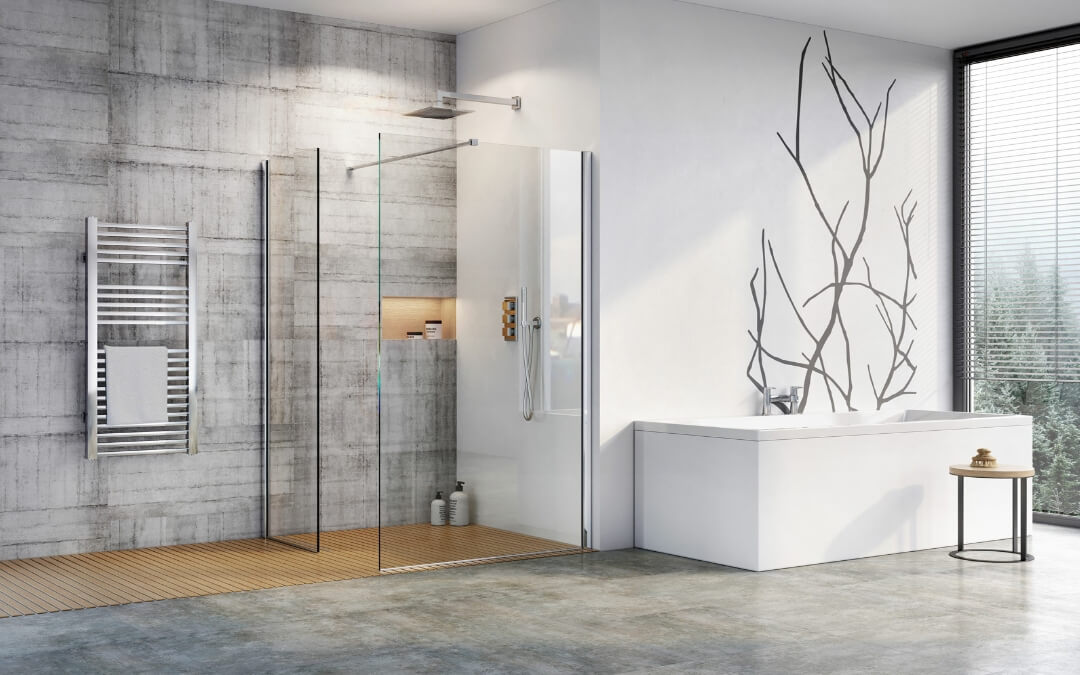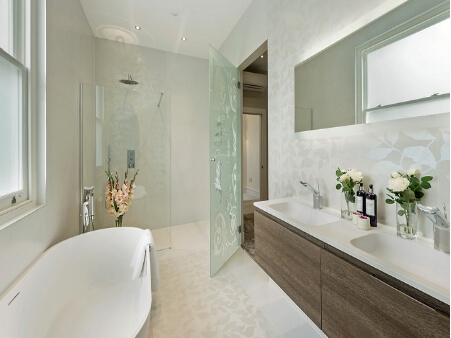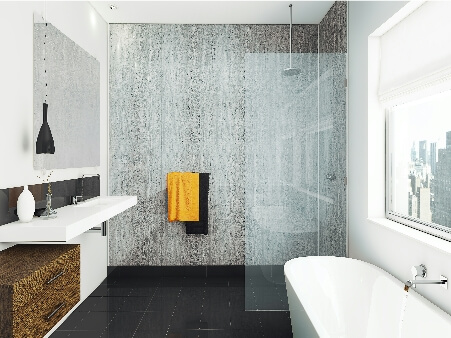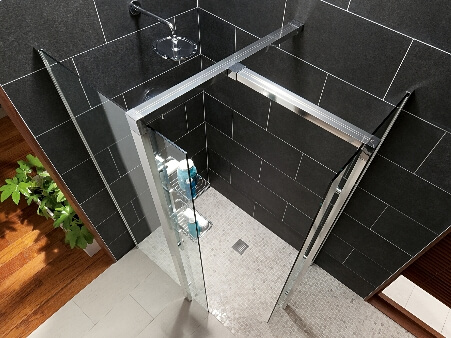Another of our series of Blogs called “Ask the Experts” and this one is by Wet Room Materials.
Many renovated properties and even new developments now have them, but with so many options available, where do you begin when creating a wet room?
Here are five ideas, based on current trends.
1) Bring The Outside Inside
Most interior designers and architects know of the hallowed ‘inside-outside’ concept. It involves making an indoor space feel like a natural, breathable, nurturing outdoor experience.
Wet rooms are leading the trend. From rooms that evoke waterfalls with living forests, to rooms that let the light flood in, many wet rooms are about creating an authentic, nature-soaked experience.
To create the inside-outside look, the secret is in the palette. Opt for a natural tone with a subtle, pale stone, and offset it with dashes of vivid, healthy green. Aloe Vera, bamboo, orchids and Boston fern all thrive in the humidity of a wet room.
2) Go Colourful!
Coloured wet rooms are not so much in vogue as simply in. Digital printing developments mean that porcelain tiles can be created in any shade and texture. Wet rooms are a wonderful playground for the imagination: simple in their requirement, they are a blank canvass for designers.
With innovations in UV lighting, there are almost no limits on what can be achieved. Designers are transforming wet rooms into an immersive sensory experience. Whether the comforting retreat in a luxury family home or the bespoke statement in an exclusive hotel, colourful wet rooms create memories.
3) Blend The Tone
With their focus upon creating an experience, many wet rooms have a distinct theme. Whether it is a lush jungle, a rolling ocean, or a desert oasis, many wet rooms are about stepping into a new environment.
Today’s engineering means that this can be achieved with an enhanced degree of aesthetic smoothness. Drains can be manufactured to tone with the surroundings, and recessed lighting means that complete tonal control is available at the touch of a button.
Designers can also work with different tile reflectiveness. Glossy tiles can augment a small space, whereas the smudgy tone of brushed porcelain refracts the light in a comfortable, non-abrasive way.
4) Don’t Take Normal For Granted
As materials and engineering have evolved, bathroom ‘norms’ have been dispensed with. Slimline cabinets and sunken baths are two ways of expanding wet room space whilst effortlessly increasing the wow-factor.
Turning the shower into a luxurious experience is another. Walk-in wet showers are increasingly recognised as being a safe, comfortable, clean alternative to clambering over the bath and into a shower. With subtle drainage and large tiles there is no need for sliding doors, grouting, or other potential bio-hazards.
The result is that wet rooms are a distinct experience, and they can be designed accordingly. When none of the ‘normal’ bathroom rules apply, designers are free to let their imaginations explore.
5) Let The Design Set The Mood
Whether you want a cool, calm, comforting space, or want to step into a glimmering sunset, a wet room can offer the experience.








